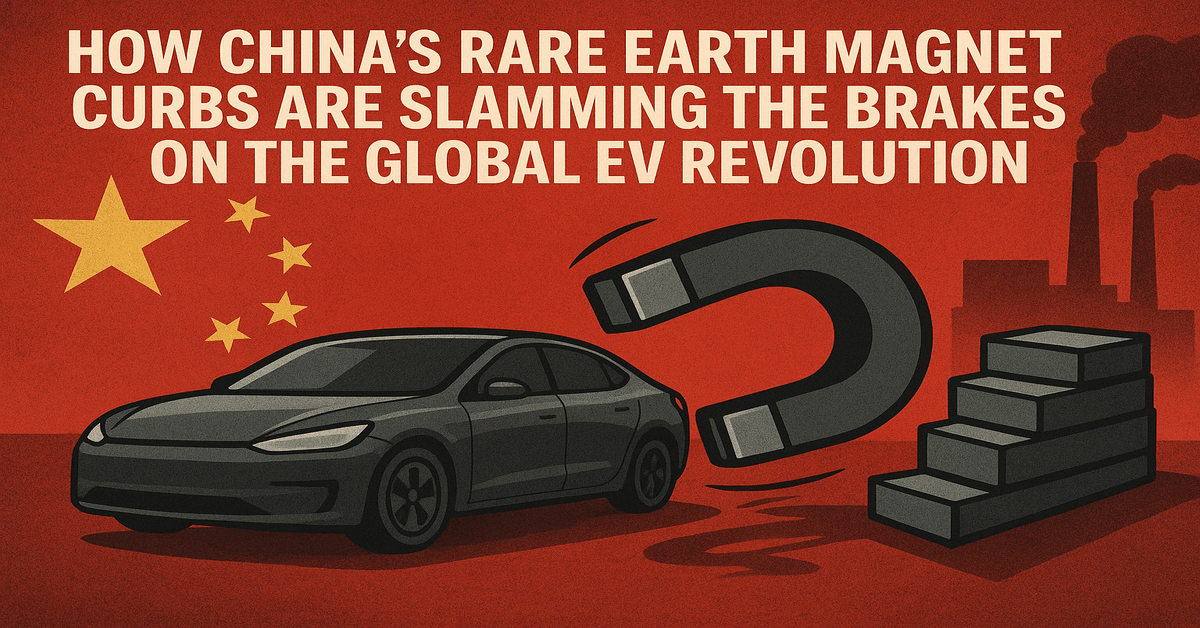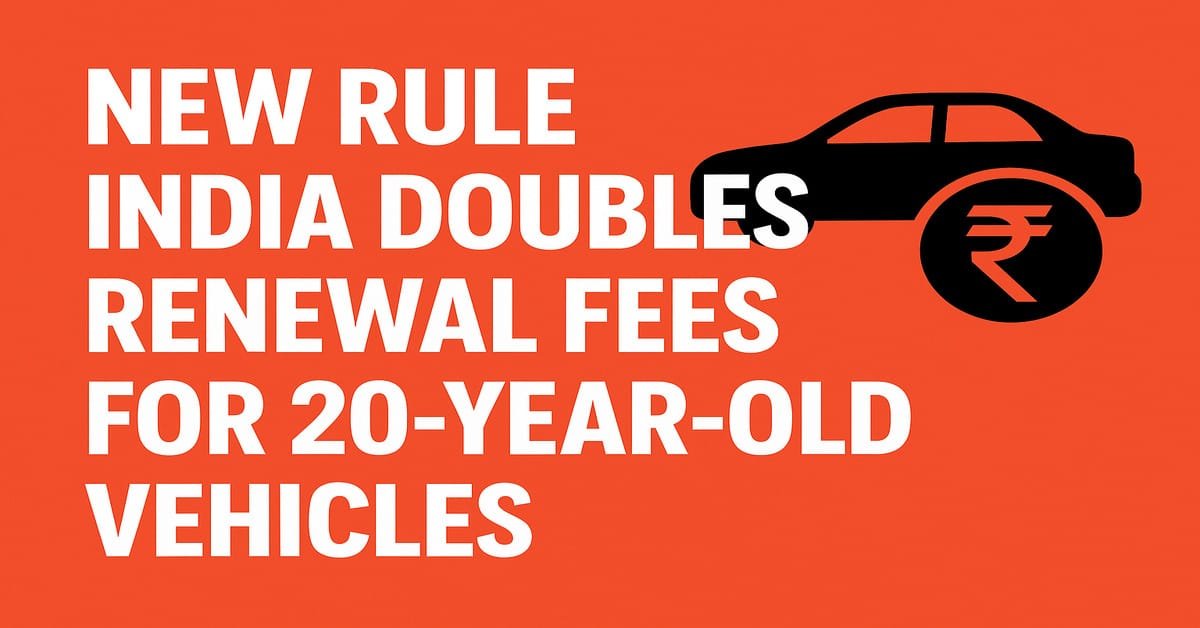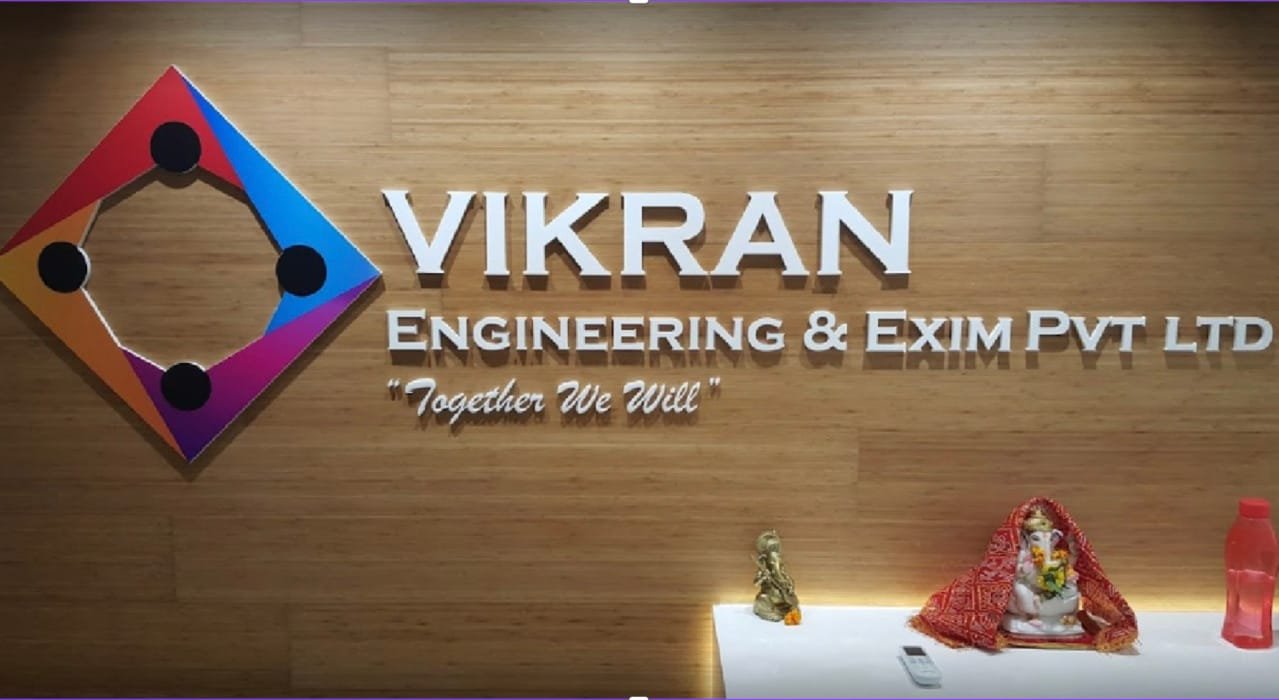The shift toward electric vehicles, envisioned as a pathway to a cleaner and quieter future of mobility, has encountered a major and unforeseen setback. In April 2025, China imposed strict new restrictions on the export of rare earth elements and the powerful magnets made from them. This situation has shaken the global auto industry, causing supply disruptions, factory shutdowns, and rising costs that threaten to delay the worldwide shift to electric vehicles.
To understand why this is such a big deal, we need to look at what these materials are. Rare earth magnets, specifically neodymium-iron-boron (NdFeB) magnets, are the hidden power behind modern EVs. They are not just any component; they are the heart of the electric motor that makes the wheels turn. They are also critical in hybrid systems, power steering, brakes, and even infotainment screens. Although they account for under 5% of a vehicle’s total cost, these magnets are indispensable for an EV to operate. Though small in size, these magnets carry enormous strategic importance. The bigger issue is the extremely concentrated supply chain over 90% of worldwide processing happens in China. This leaves automakers everywhere, from Detroit to Delhi, heavily reliant on Chinese exports for vehicle production. This dependency has now become the industry’s biggest weakness.
Under China’s new rules, companies must obtain special export permits for seven critical rare earth elements as well as for the finished magnets made from them. Since April, the approval process has been plagued by long delays and a very high rate of denials, particularly for automakers outside of China. Shipments to the United States, the European Union, and India have been effectively paralyzed, throwing production plans into chaos. A small number of U.S. automakers, including GM, Ford, and Stellantis, were granted temporary six-month licenses, providing a brief sigh of relief. Yet, these measures are only temporary and may not be extended, leaving the industry facing ongoing uncertainty.
Manufacturing plants worldwide are already feeling the impact. In the United States, Ford was forced to suspend production for a week. While temporary licenses have prevented a total collapse for now, the situation remains precarious. American companies like MP Materials are racing to build magnet production plants in Texas, but these domestic solutions are still years away from being able to meet the massive demand.
The situation in Europe is equally dire. The shortage has forced major component factories in Germany and Austria to halt operations temporarily. Reports indicate that companies applying for the necessary export licenses are facing a rejection rate of about 75%. Emergency stockpiles that companies relied on are running dangerously low. The European Union is pouring resources into recycling initiatives and alternative supply chains, but similar to the U.S., these plans are long-term and provide little short-term relief.
For India, whose EV market has been one of the world’s fastest-growing, the crisis poses an existential threat. A staggering 80% of India’s magnet imports come from China. While alternative sources exist in countries like the U.S. and Japan, they are significantly more expensive. This places immense strain on cost-sensitive Indian manufacturers. The result is likely to be production delays and, ultimately, higher prices for consumers, which could seriously dampen the country’s ambitious clean energy goals.
In response, companies are scrambling. Manufacturers are burning through their existing inventories, but many expect their supplies to be completely depleted by the end of August 2025, which would force production lines to grind to a halt. Magnet prices obtained through indirect routes such as imports via Taiwan have surged to nearly three times their earlier levels, driving up the overall cost of producing electric vehicles. In response, Indian carmakers are pressing their government to strike deals with China and accelerate domestic import approval procedures. Looking forward, the auto industry is being pushed to adjust in unexpected ways, with some companies racing to develop electric motors that eliminate the need for rare earth magnets altogether. However, these technologies are still in the laboratory or early testing phases and are not yet ready for the millions of cars needed globally.
One major and possibly deliberate outcome of these export restrictions is the potential drop in rare earth prices within China. This would allow Chinese EV makers to produce vehicles at lower costs, strengthening their global competitiveness while foreign automakers grapple with shortages and rising expenses.
In summary, China’s restrictions on rare earth magnets have exposed a critical vulnerability in the global supply chain. The dream of a worldwide electric future is being limited by geopolitical tensions and the lack of immediate alternatives. This challenge has become a sharp reminder, driving urgent global efforts to expand supply networks, boost recycling initiatives, and advance new technological solutions. What lies ahead is a challenging race against time one that will shape both the cost and the speed of the world’s transition to electric mobility for years to come.









